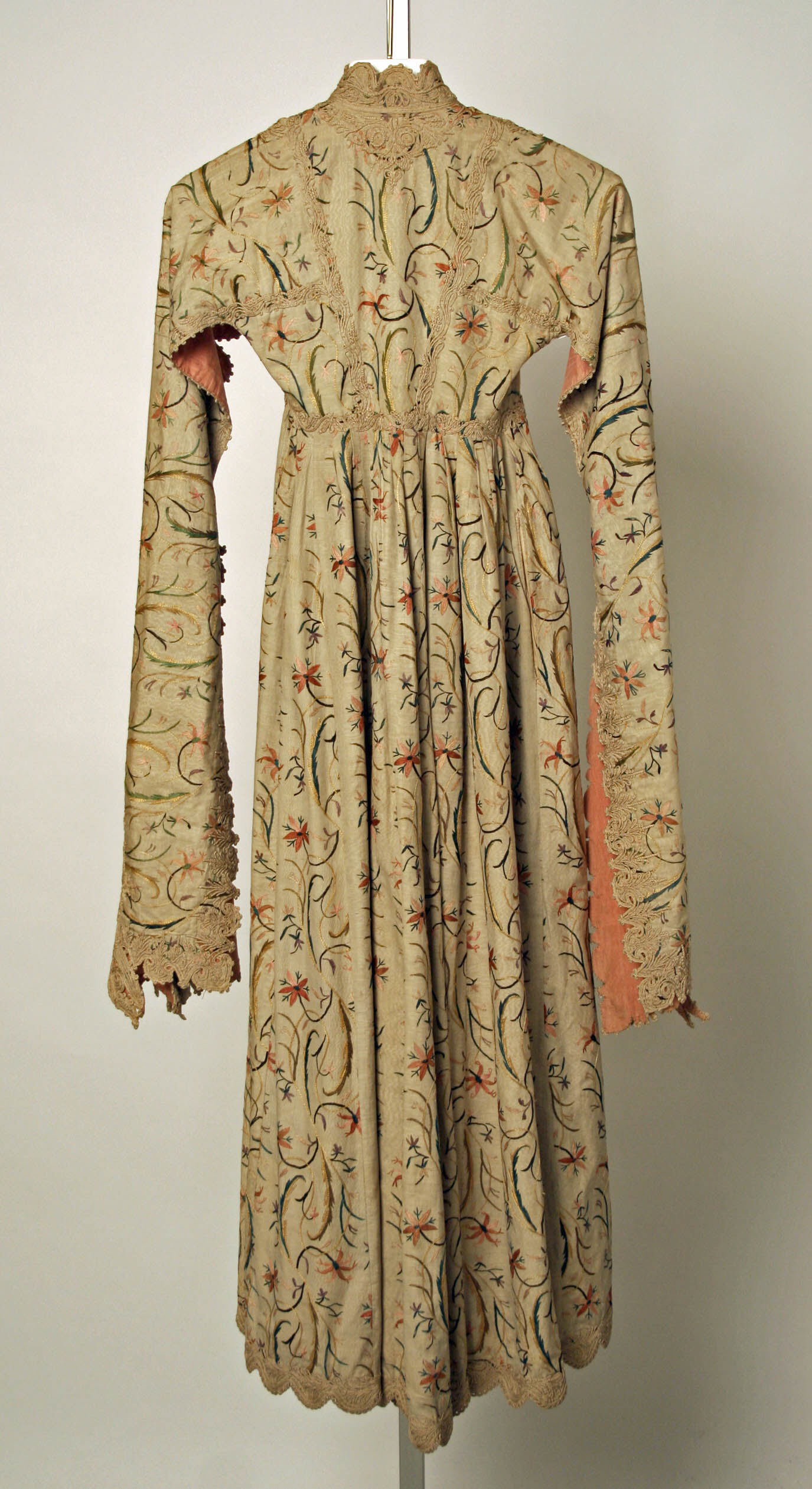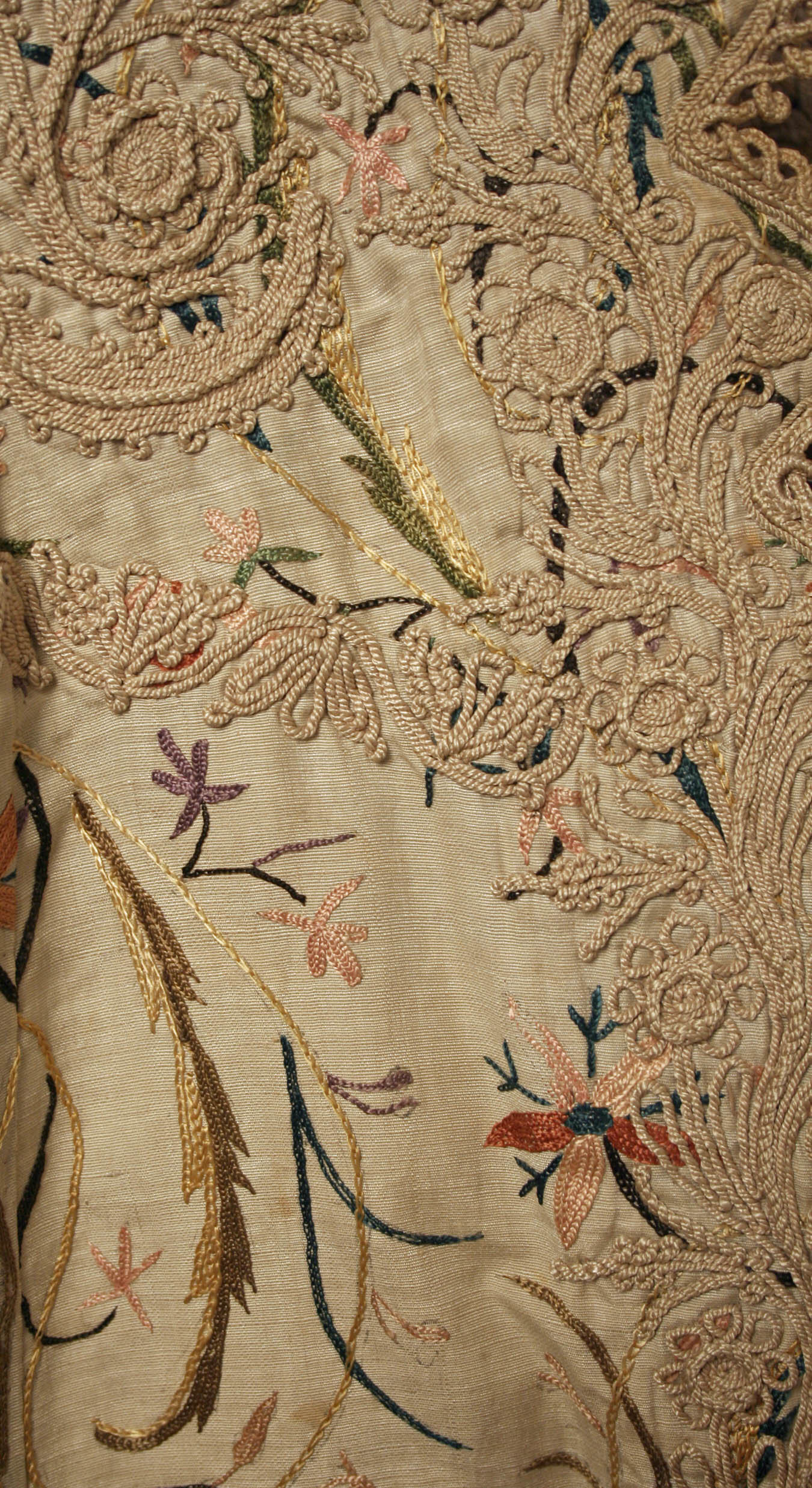Child's Robe
Not on view
This robe with its smaller dimensions was probably intended for a child or a small woman from the middle or upper classes. A luxurious garment, the dress is made of lavish beige-green moiré silk fabric with the characteristic wavy surface finish and a repeat pattern of feathery leaves and flowers in delicate earthen-tones of rose, greens, or yellow finely embroidered in silk. While the overall shape evokes Ottoman entari robes of the nineteenth and early twentieth centuries, the sharply defined fitted waist and flaring skirt, as well as the bodice sewn of individually tailored pieces point to a more western fashion tradition. Such features are frequently associated with the Balkan tradition. The long decorative sleeves with scalloped double slits, which would have revealed the wearer’s undershirt, is characteristically Balkan. This example with a triangular panel hanging down in the front of the sleeve presents a less common asymmetrical and particularly lavish version of sleeves. Instead of typical passementerie bands, common in Balkan robes, this example has been extensively decorated with a repeating leaf pattern in the laid cord technique to mark the bodice in the front and back, the neck and collar, as well as the scalloped edges, sleeves and cuffs. Another technique associated with the sewing tradition of the Balkan communities is the practice of tagging the inner lining to the outside fabric, although only visible from interior.
Due to rights restrictions, this image cannot be enlarged, viewed at full screen, or downloaded.
This artwork is meant to be viewed from right to left. Scroll left to view more.




